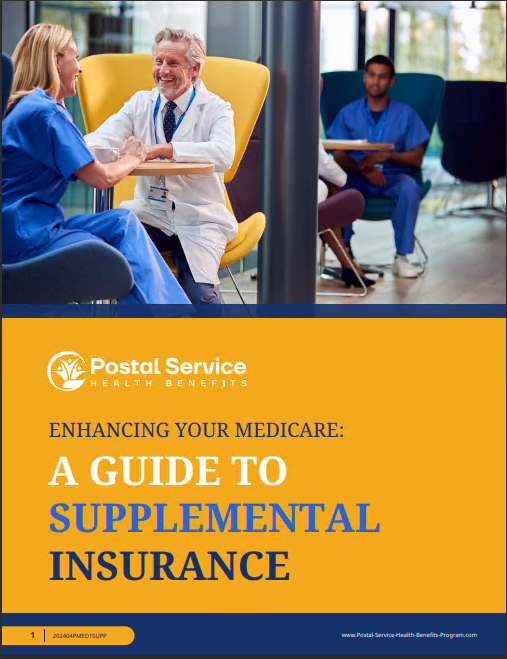Key Takeaways
-
Medicare Part C and the Postal Service Health Benefits (PSHB) program work together to enhance your healthcare coverage, offering robust benefits that cater to your specific needs.
-
Understanding how these programs integrate can help you make the most of your coverage, save on costs, and access a wide range of services.
Navigating Healthcare with Medicare Part C and PSHB
As a Postal Service employee or retiree, you’re no stranger to the intricacies of health benefits. The transition to the Postal Service Health Benefits (PSHB) program offers a new landscape for healthcare coverage, and when paired with Medicare Part C, the options become even more comprehensive. Let’s break down how these two programs align to deliver robust benefits and why you should consider leveraging both.
What is Medicare Part C?
Medicare Part C, also known as Medicare Advantage, is an alternative to Original Medicare that combines Parts A and B into a single plan. These plans are offered through private insurance companies approved by Medicare, often including additional benefits like prescription drug coverage, dental, vision, and hearing services. Part C simplifies your coverage by bundling services into one plan, offering convenience and often enhanced benefits.
Key Features of PSHB
The Postal Service Health Benefits program, launched in 2025, is tailored for Postal Service employees, retirees, and their families. It replaces the Federal Employees Health Benefits (FEHB) program for postal workers and integrates seamlessly with Medicare for eligible enrollees.
Some standout features of PSHB include:
-
Comprehensive Coverage: Includes medical, prescription, dental, and vision benefits.
-
Medicare Integration: Offers reduced deductibles, lower copayments, and decreased out-of-pocket costs for those enrolled in Medicare Part B.
-
Affordable Options: Government contributions help cover approximately 70% of premiums, making PSHB plans cost-effective.
How These Programs Complement Each Other
When Medicare Part C is combined with PSHB, you unlock a powerful synergy. Here’s how the integration benefits you:
1. Coordinated Benefits
PSHB plans work alongside Medicare Part C to cover gaps in services, ensuring you’re protected from unexpected healthcare costs. For example, while Medicare Advantage plans include a network of providers, PSHB’s robust coverage can expand your options.
2. Enhanced Prescription Drug Coverage
PSHB enrollees with Medicare Part C often receive prescription drug coverage through the Medicare Employer Group Waiver Plan (EGWP). This setup ensures consistent access to affordable medications, even for high-cost prescriptions.
3. Reduced Out-of-Pocket Costs
Combining the two programs often leads to waived or reduced deductibles, copayments, and coinsurance. This is particularly beneficial for those managing chronic conditions or requiring regular medical services.
4. Access to Supplemental Benefits
Medicare Advantage plans typically include supplemental benefits like fitness memberships, telehealth services, and wellness programs. Paired with PSHB’s comprehensive offerings, your overall healthcare experience is significantly enriched.
Making the Transition Seamless
Transitioning to the PSHB program while integrating Medicare Part C requires some strategic planning. Here’s a step-by-step guide to ensure a smooth process:
Step 1: Understand Enrollment Requirements
Enrollment in PSHB is mandatory for Postal Service employees and retirees beginning January 1, 2025. If you’re Medicare-eligible, you must also enroll in Medicare Part B to maintain your PSHB coverage. Medicare Part C enrollment is optional but highly recommended for enhanced benefits.
-
Timeline: You can enroll in Medicare Advantage during the Medicare Open Enrollment Period from October 15 to December 7.
Step 2: Review Your Options
Not all Medicare Advantage plans are the same. Consider factors such as:
-
Provider Networks: Ensure your preferred doctors and hospitals are in-network.
-
Prescription Drug Formulary: Check if your medications are covered.
-
Additional Benefits: Evaluate extra perks like dental and vision coverage.
Step 3: Coordinate Benefits
Once enrolled, ensure your PSHB and Medicare Part C plans are working together seamlessly. You may need to:
-
Provide both insurance cards when seeking services.
-
Confirm that your providers accept both plans.
Step 4: Monitor Annual Changes
Both Medicare and PSHB plans can change yearly. Review your Annual Notice of Change (ANOC) letters to stay informed about updates to premiums, deductibles, and coverage.
Benefits You Can Count On
When Medicare Part C and PSHB are combined, your healthcare benefits are enhanced in several tangible ways. Let’s explore some key advantages:
Financial Savings
The PSHB program’s integration with Medicare significantly reduces your financial burden. From lower premiums to capped out-of-pocket drug costs, you’ll experience noticeable savings. In 2025, Medicare Part D introduces a $2,000 out-of-pocket cap for prescription drugs, a major relief for those with high medication costs.
Streamlined Access to Care
With coordinated coverage, navigating the healthcare system becomes easier. Medicare Advantage plans simplify your coverage under one umbrella, while PSHB adds an extra layer of support, ensuring comprehensive care without the administrative hassle.
Tailored Health Benefits
Whether you need regular check-ups, specialized treatments, or preventive services, the combination of PSHB and Medicare Advantage ensures your health needs are met. Supplemental benefits like fitness programs and telehealth services further enhance your well-being.
Addressing Common Concerns
Switching to a new healthcare program can feel overwhelming, but understanding the details helps alleviate concerns. Here are answers to some common questions:
What if I’m not eligible for Medicare yet?
If you’re under 65 or don’t qualify for Medicare, you can still enroll in a PSHB plan. These plans offer comprehensive coverage independently and ensure a seamless transition once you become Medicare-eligible.
Can I keep my current doctors?
This depends on your chosen Medicare Advantage and PSHB plans. Review provider networks during enrollment to ensure your preferred doctors and specialists are covered.
How do I handle prescription coverage?
Most Medicare Advantage plans include prescription drug coverage, which integrates with PSHB’s offerings. Confirm your medications are included in the plan’s formulary to avoid surprises.
Why This Integration Matters
Healthcare isn’t just about coverage; it’s about peace of mind. By leveraging Medicare Part C and PSHB together, you’re investing in a healthcare strategy that prioritizes your needs. From financial savings to expanded benefits, this partnership is designed to provide the best possible care for Postal Service employees and retirees.
Taking the Next Steps
Now that you understand how Medicare Part C and PSHB work together, it’s time to act. Whether you’re new to Medicare Advantage or looking to optimize your PSHB benefits, careful planning and informed decisions will ensure you’re making the most of your healthcare coverage.
Final Thoughts on Optimizing Your Healthcare
The combination of Medicare Part C and the Postal Service Health Benefits program is a game-changer for 2025. By taking advantage of these programs, you gain comprehensive, cost-effective, and streamlined healthcare coverage tailored to your needs. Don’t miss out on the opportunity to enhance your benefits—start exploring your options today.






